PROTECT YOUR DNA WITH QUANTUM TECHNOLOGY
Orgo-Life the new way to the future Advertising by AdpathwayWhile August may not have the abundant blooming trees of spring, there are still many flowers that bloom this time of year. Many perennials wait until late summer to do their best blooming. Quite a few annuals are giving their last, robust bloom of the year this month as well.
As we begin to see our summer vegetables reach their final harvesting point, the garden can get a little bare. It’s too hot for those cool-weather veggies, but it’s just right for some heat-loving flowers that do their best blooming in the heat. Many annuals are peaking this time of year, and quite a few perennials are heat-loving bloomers.
If you want flowers that bloom in August, all you have to do is plant the right things. By planting things that bloom during different seasons, you’re not just creating a beautiful space for yourself to enjoy. It also helps bridge nectar gaps for vital pollinators.
Here are some of my favorite flowers that bloom well in the month of August.
Purple Coneflower Echinacea

Purple Coneflower Echinacea Seeds
Cherry Brandy Black-Eyed Susan
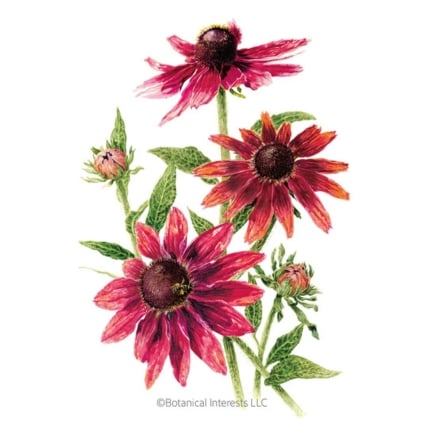
Cherry Brandy Black-Eyed Susan Seeds
Double Sunburst Coreopsis

Double Sunburst Coreopsis Seeds
Coneflower
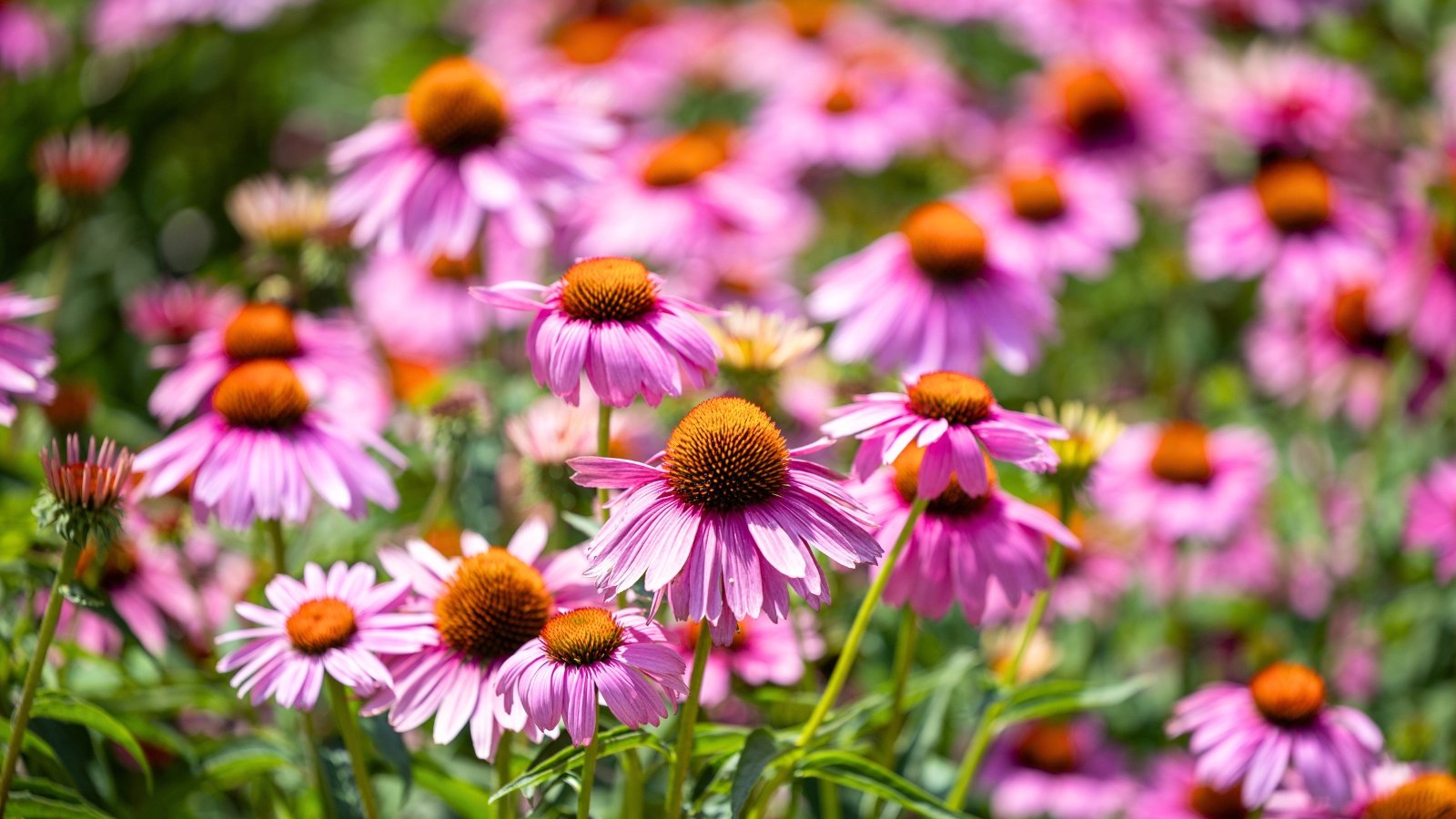 Blooms hard through the heat and drought of late summer.
Blooms hard through the heat and drought of late summer.Coneflowers are a great pollinator plant, and make excellent, long-lasting cut flowers. Their spiky cones add a textural surprise mingled with softer, more rounded flowers and foliage. Though the most common color for these is purple, they also come in a wide array of shades. My favorite coneflowers are white.
Their long blooming season lasts from early summer to mid-fall, sometimes longer in warm climates. They love heat, and once established, these perennials are quite drought-tolerant. August is a top month for coneflowers to hit peak bloom.
Black-Eyed Susan
 Stays vibrant in summer and rarely has pest issues.
Stays vibrant in summer and rarely has pest issues.In many regions, August is peak bloom time for black-eyed Susans. While they get started earlier in warm climates, if you travel north of zone 8, you’ll find them in abundance. They are an excellent support for pollinators and make beautiful and whimsical cut flowers.
I love the long stems and soft, fuzzy foliage of black-eyed Susans. This texture is off-putting to many nuisance insects, so these are sturdy and have few issues. Aside from occasional staking, these flowers that bloom in August require little maintenance. Perennials in most of the U.S., they also self-sow and naturalize easily.
Dahlia
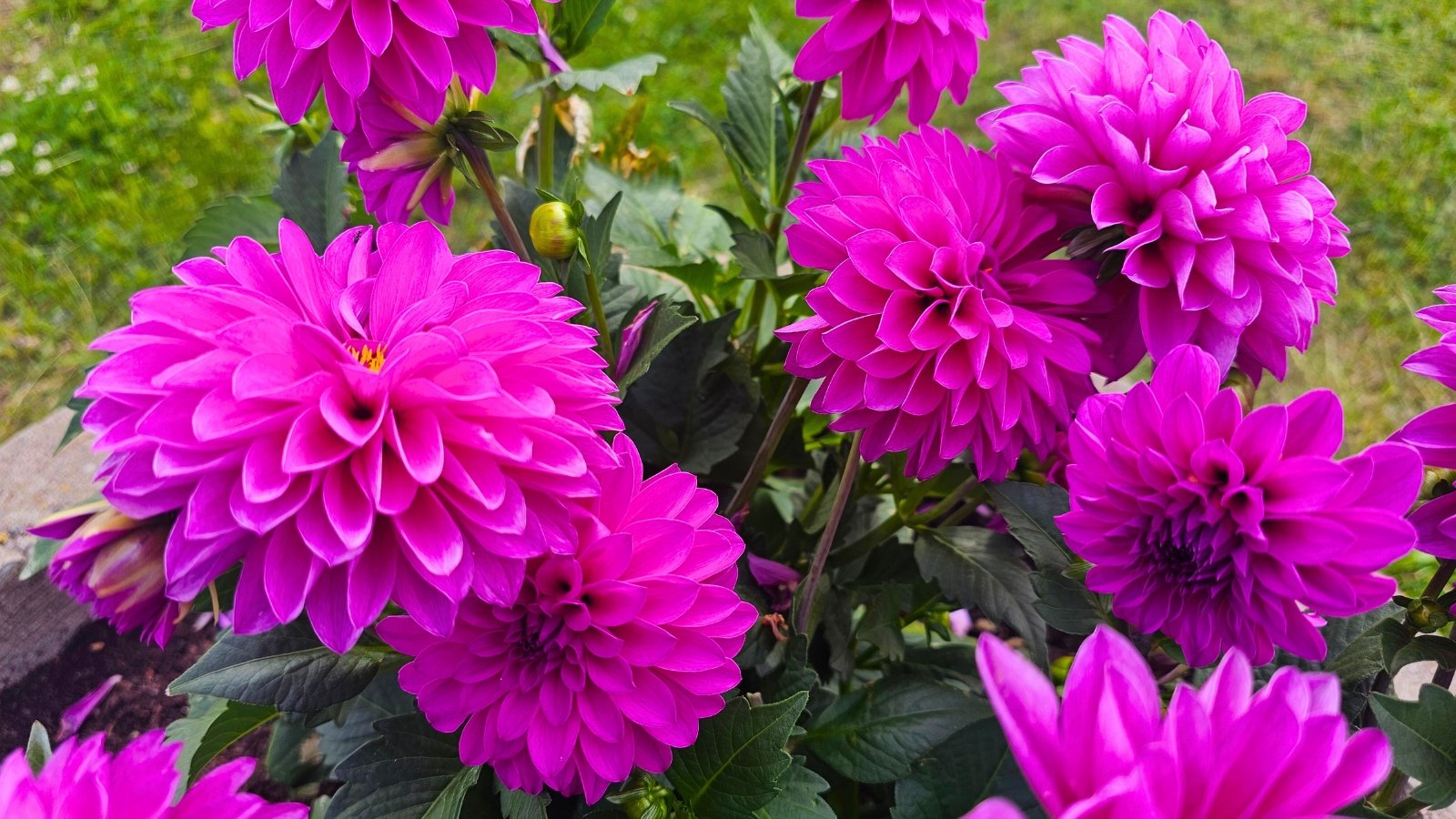 Needs deadheading and water to keep blooming into fall.
Needs deadheading and water to keep blooming into fall.August is a peak month for dahlias, though they require a bit more work to brave the late summer heat. These incredible blooms come in many shapes and sizes, and are some of the most wonderful for floral arrangements. In cool climates, they are just ramping up this time of year.
Make sure to give your dahlias ample water in August, as it can sometimes be dry and extra hot. With regular deadheading, your flower will continue to bloom, often as late as October. Perennials in warm climates, you’ll want to get these in the ground early in cool climates to get the most flowers out of them.
Coreopsis
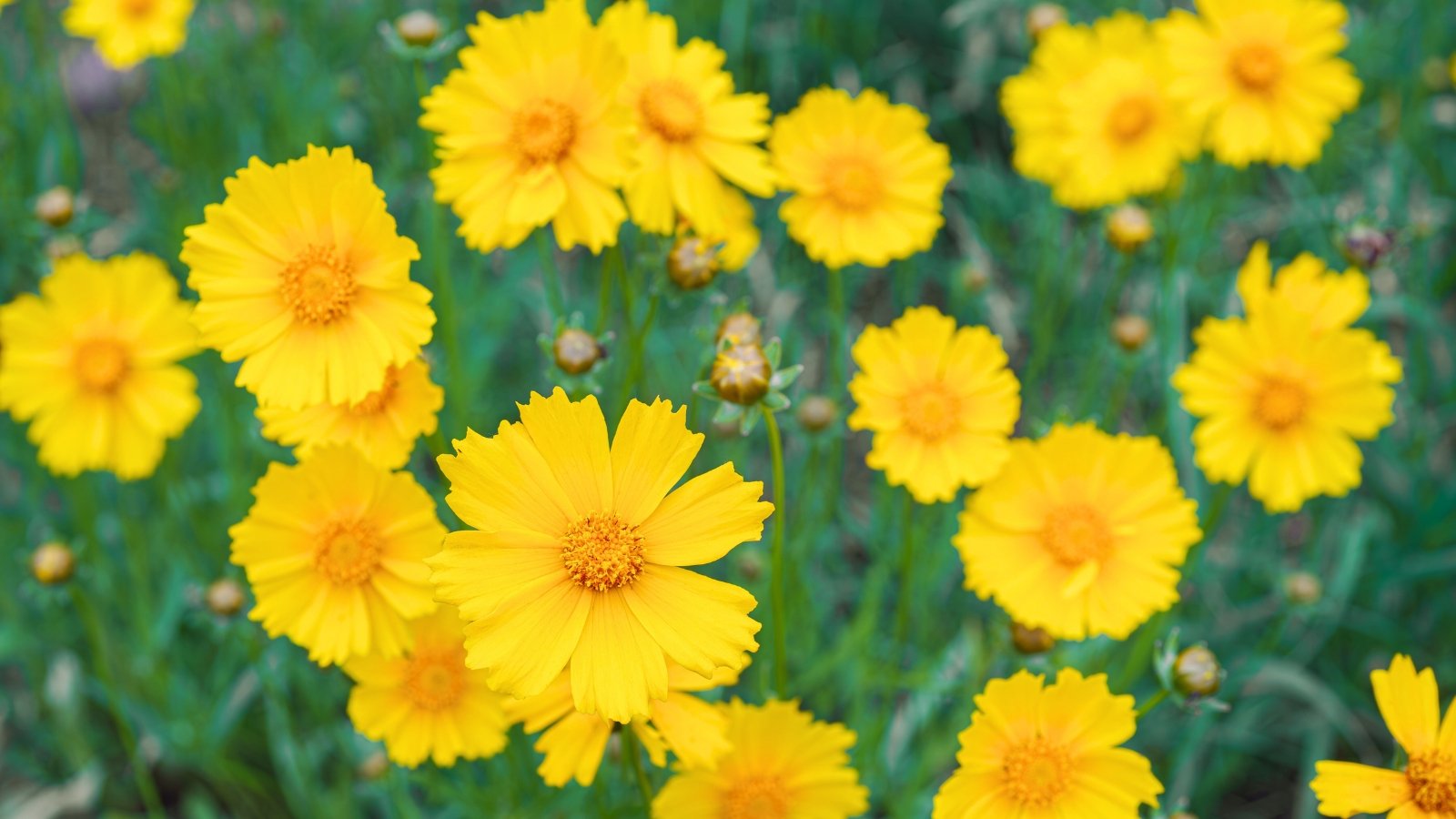 Shear after the first bloom to trigger strong August flowers.
Shear after the first bloom to trigger strong August flowers.Coreopsis is a flower that often blooms in August, especially if you deadhead them after their first flush. Most varieties begin to flower in early summer through the fall, with August being one of the strongest months. Give the entire plant a shearing after the first bloom, and they will come back for a more intense flowering by this time.
For feeding pollinators, coreopsis is wonderful. They are especially attractive to butterflies. August is a prime month in many regions for monarchs to be passing through. They are heat and drought-tolerant, so they are lower maintenance mid-summer than many other flowers blooming at this time.
Russian Sage
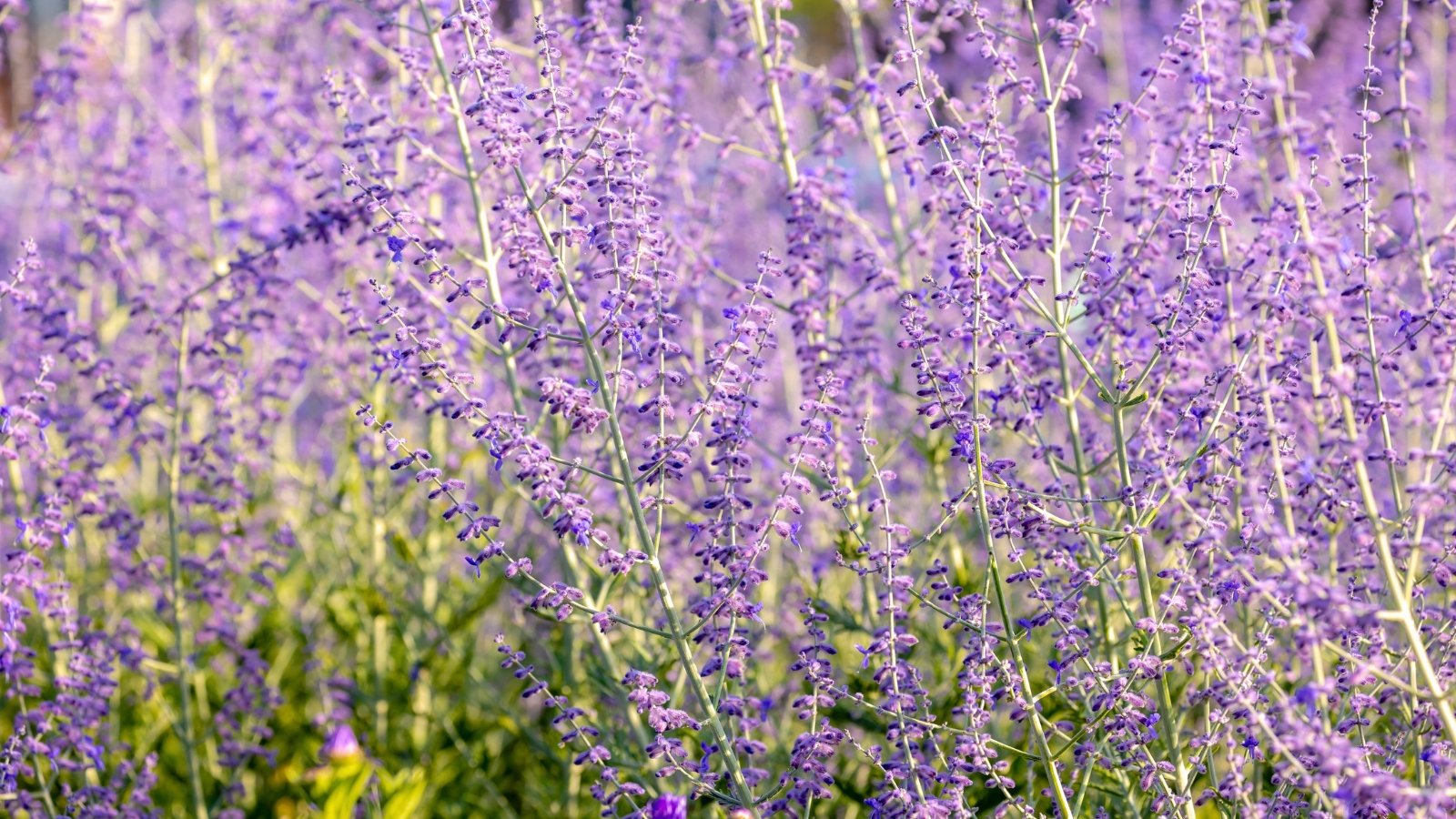 Grows well without fuss in hot, dry gardens.
Grows well without fuss in hot, dry gardens.In most places, Russian sage peaks in the month of August. The tall spikes of purple flowers bloom in August during the hottest times of the year. This is not just a heat-tolerant plant, it’s a heat-loving one. It’s happiest in hot, dry weather.
Because of its affinity for hot, dry weather, Russian sage is wonderfully low-maintenance. Even in the warmest reaches of its range, it asks little of its gardener. It’s dependable and beautiful, and offers a ton of color in the late summer garden.
Zinnia
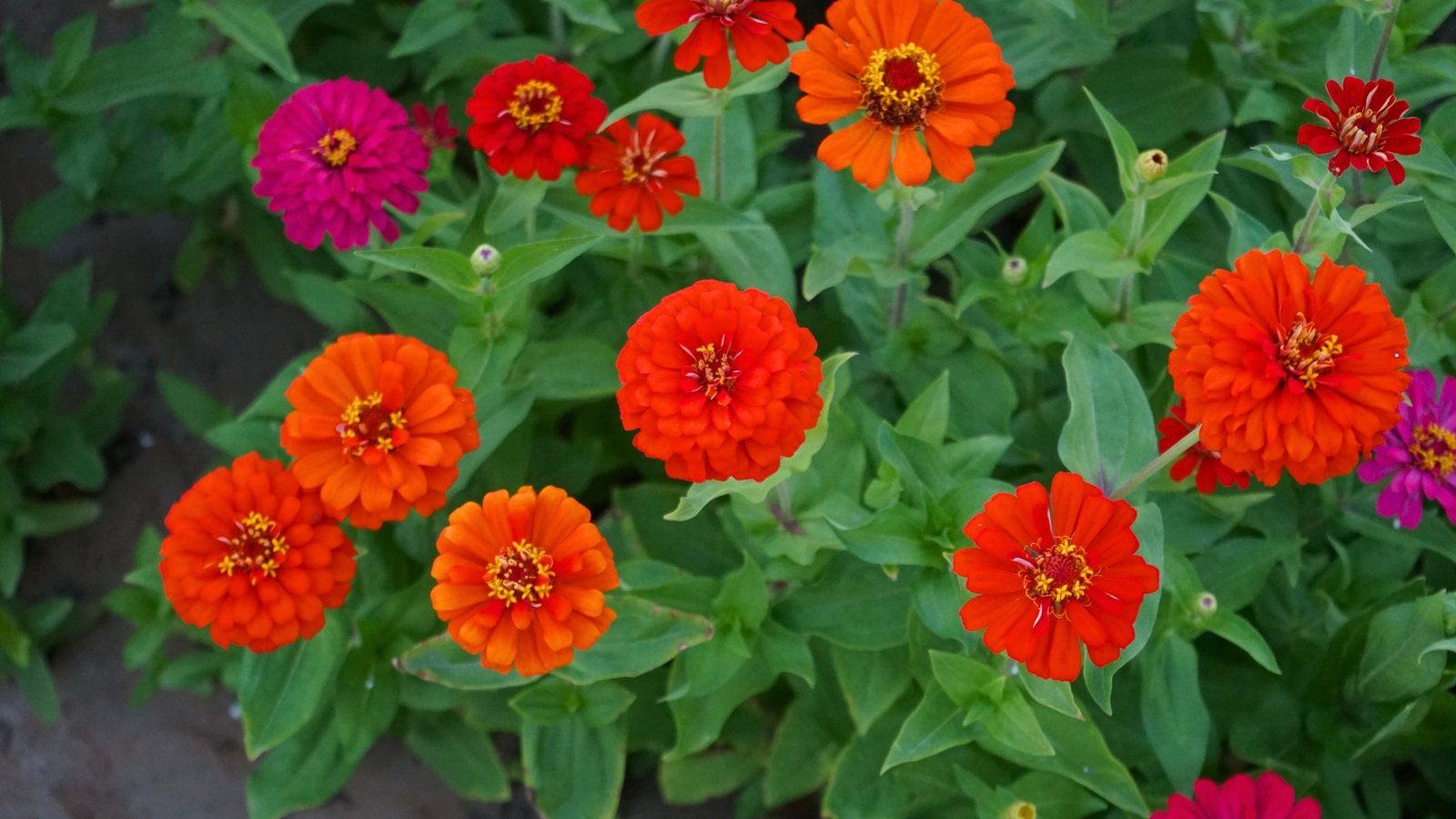 Cut often to keep flowers coming into late summer.
Cut often to keep flowers coming into late summer.In warmer climates, zinnias may be waning by late summer. But August should bring a burst of color as they put their last bit of energy into a final bloom.
These bright and cheerful flowers bloom throughout the summer. They flower about 50-60 days after planting, so plant them in rounds throughout the spring and early summer.
Zinnias love heat, and they make excellent cut flowers. Wait until their long stems are stiff to cut them. With consistent cutting or deadheading, your zinnia plants will tower over the garden by August. They will branch wonderfully, which means more and more flowers bloom as summer progresses.
Sunflower
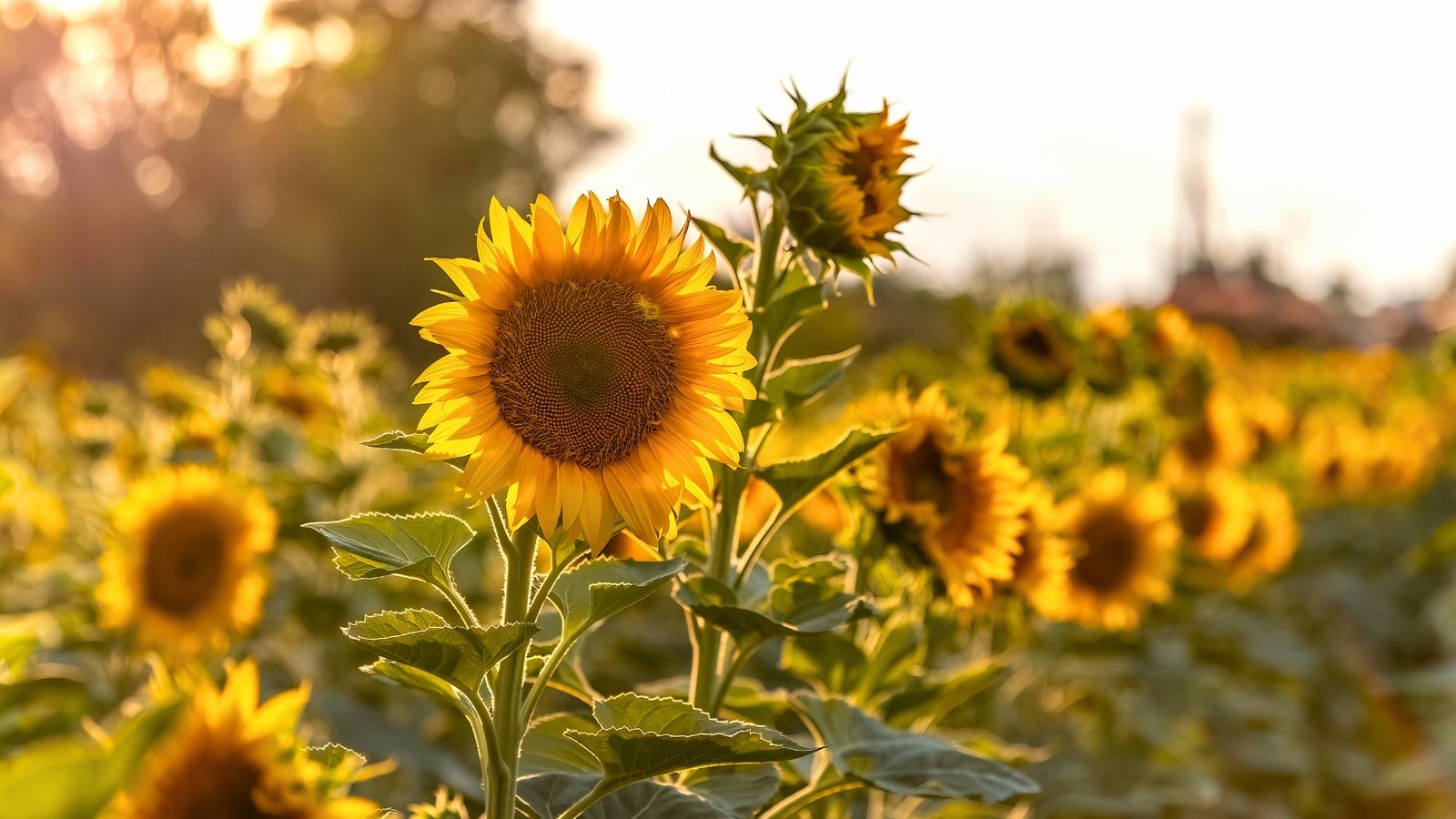 Taproots keep tall plants steady and drought-resistant.
Taproots keep tall plants steady and drought-resistant.For August-blooming sunflowers, put those seeds in the ground in May and June. These towering beauties take an average of 90 days to bloom, depending on the size and variety.
Sunflowers are a pollinator favorite and are especially attractive and helpful for native bees. I love to watch all the different species enjoying their sweet nectar and broad, flat faces.
Sunflowers grow tallest when you directly sow the seeds. They form a long tap root, which helps to anchor them in strong winds. This will help them to form thick, strong stems and larger, more beautiful flowers that bloom for a longer period. Squirrels like to dig them up, so try to keep them covered until after they sprout.

Hibiscus
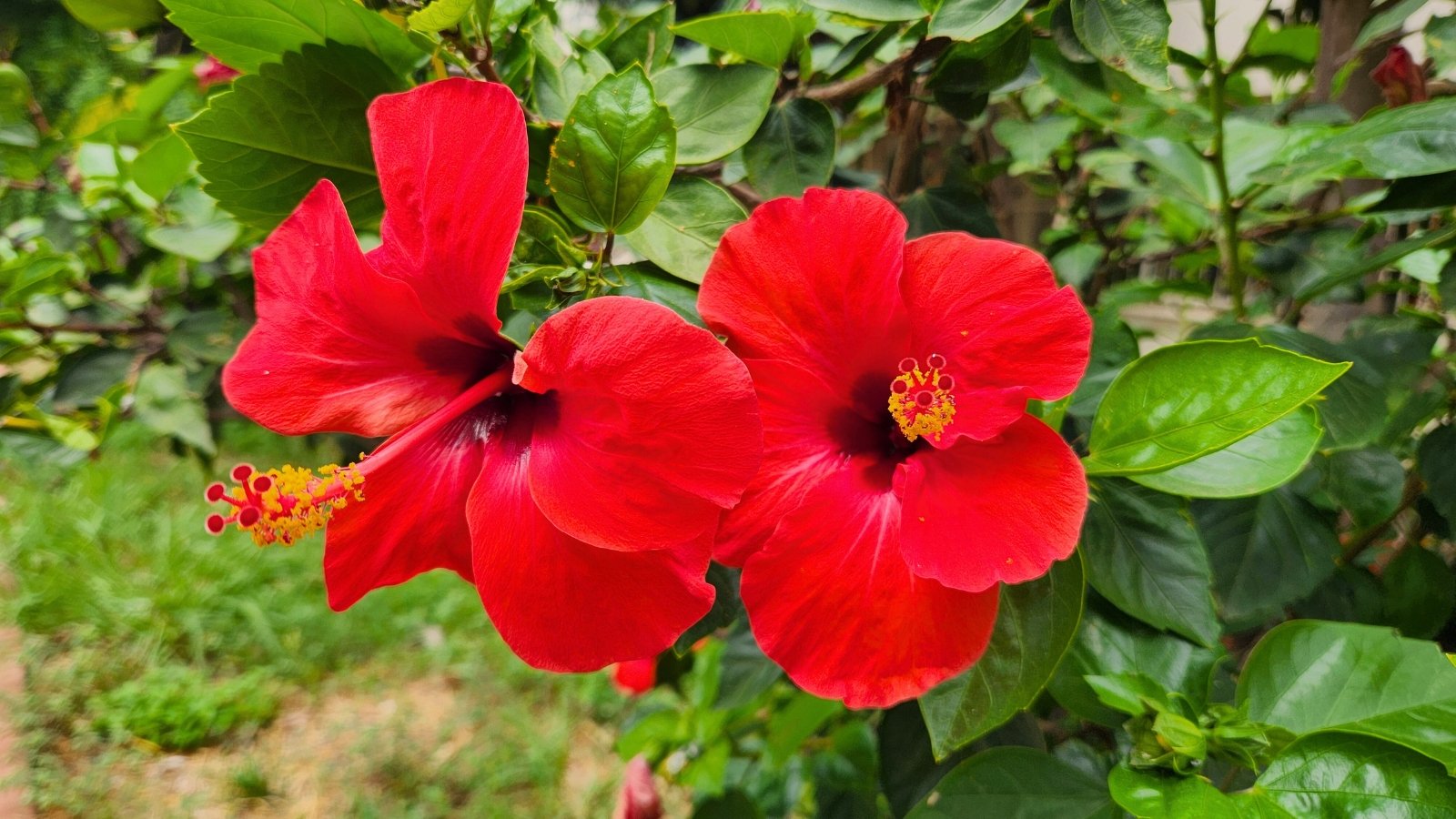 Big blooms open daily through the hottest part of summer.
Big blooms open daily through the hottest part of summer.Growing up in Zone 11, South Florida, tropical hibiscuses bloom nearly year-round. If you’re lucky enough to live in a tropical climate, you know that these flowers definitely bloom in August. Farther north, we have several species of cold-hardy hibiscus, and August is a peak flowering time for these shrubs.
Hardy hibiscus plants begin flowering in early to mid-summer. While some only flower for a few weeks, many will continue to bloom up to the first frost. The individual flowers only last a day or two, but these are such prolific bloomers that new ones will open every day.
Marigold
 Hot-weather bloomer that keeps going if you deadhead.
Hot-weather bloomer that keeps going if you deadhead.Marigolds are wonderful flowers that bloom in August. They often begin to bloom in late spring and continue until the first frost. This makes August a peak month for these cheerful plants. As an added bonus, marigolds are not prone to pests, as their strong scent acts as a deterrent.
Marigolds love hot weather. They’re low maintenance, and if you deadhead, they will continue to branch. They’ll produce more and more flowers as the season goes on. They’re not a top nectar source, but the single-flowered types do attract bees and butterflies.
Celosia
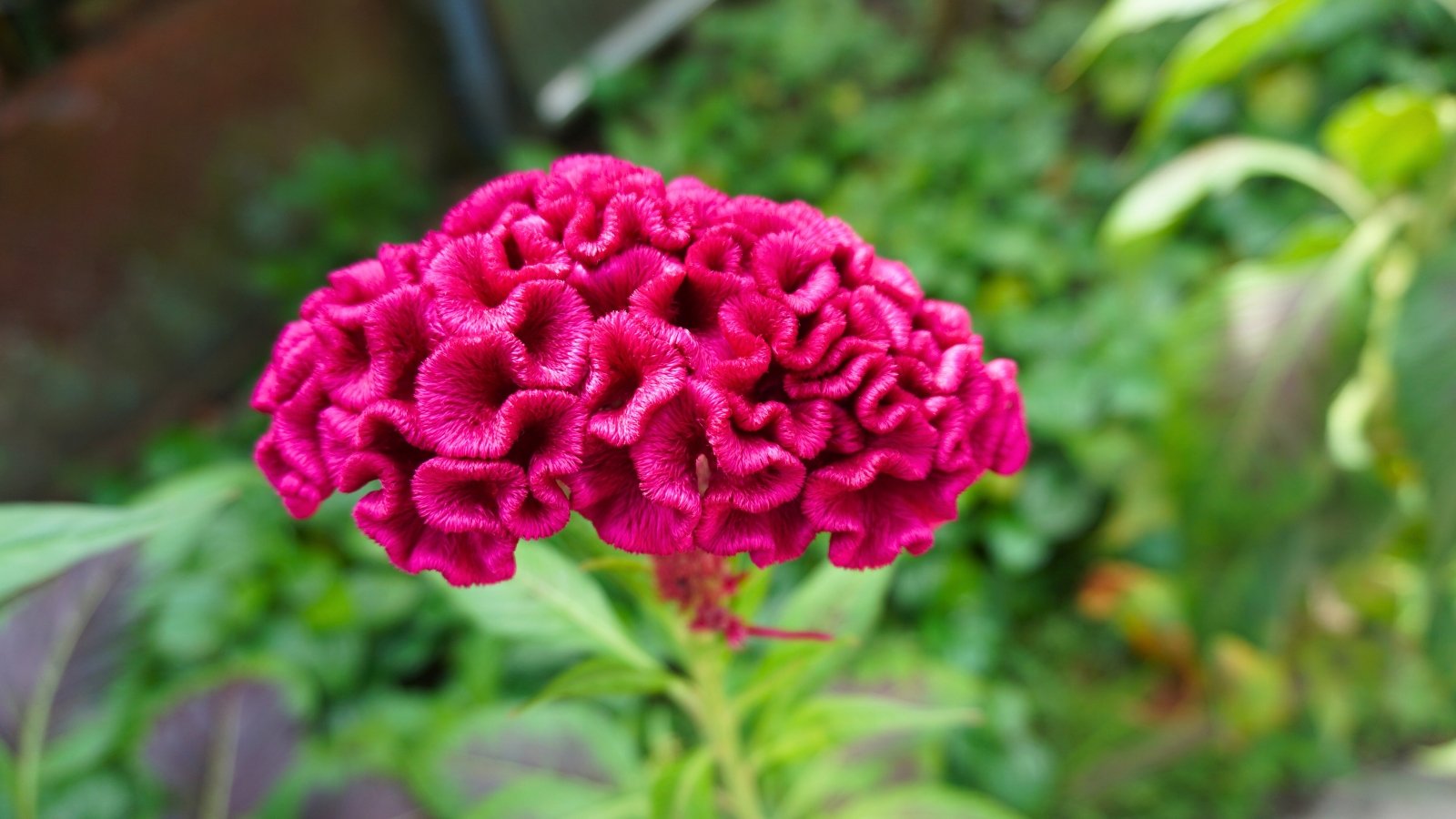 Fuzzy flowers bloom now and dry well for later.
Fuzzy flowers bloom now and dry well for later.Celosia is related to amaranth, and they are heat-lovers. August is a peak flowering time for these bright and colorful bloomers. Their uniquely fuzzy flowers are wonderful for cut arrangements, and they dry beautifully, too. They retain much of their color in drying, and they last a long time.
In terms of pollinators, celosia attracts bees, butterflies, and other beneficial insects when the flowers bloom. This helps keep nuisance insects to a minimum, as many beneficial insects and their larvae are voracious predators. For larger flowering varieties, August is when the flowers are finally ready to harvest. These take longer for the flowers to mature.
Mexican Sunflower
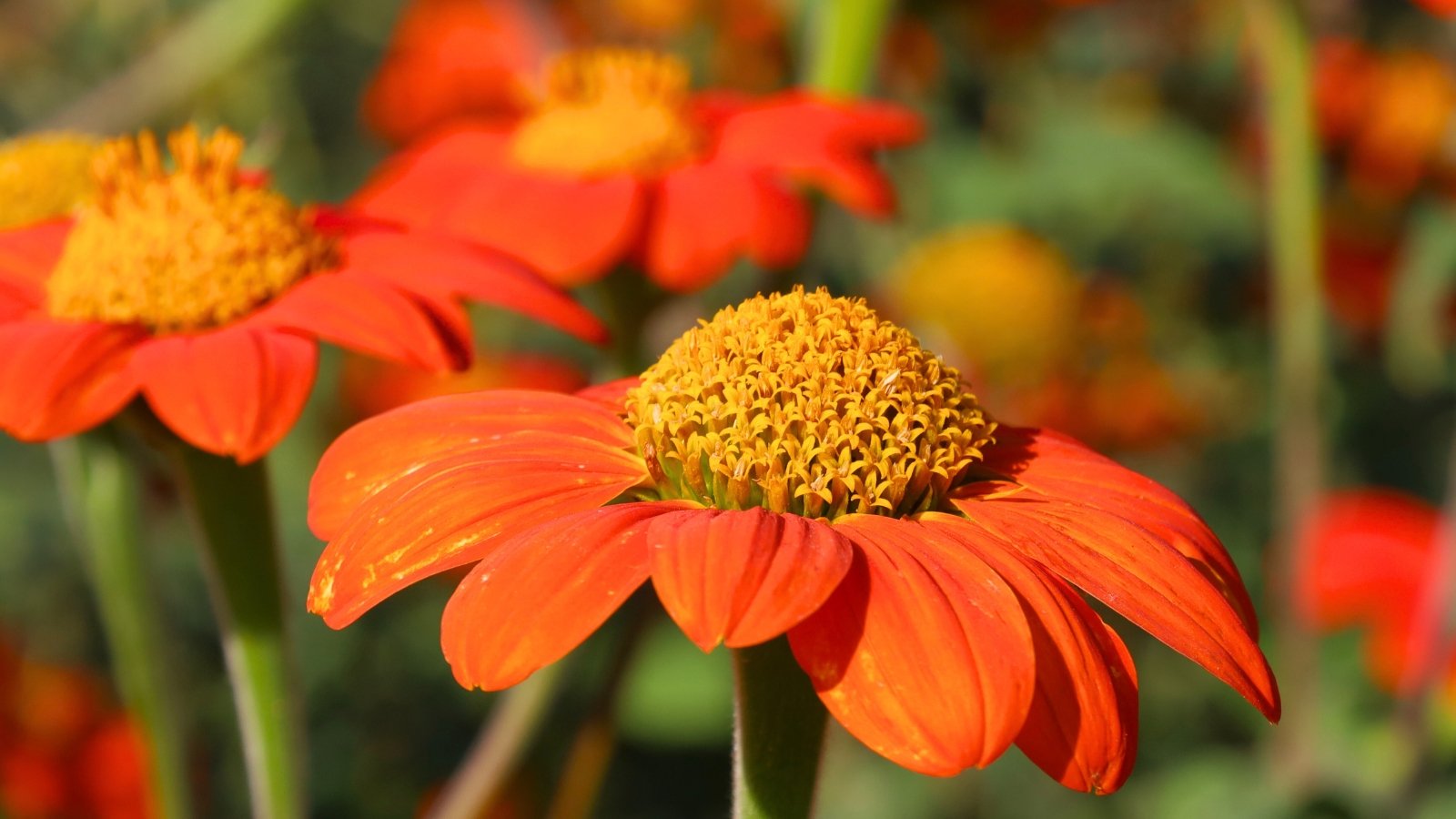 Draws pollinators during monarch migration in late summer.
Draws pollinators during monarch migration in late summer.Mexican sunflowers, similarly to annual sunflowers, reach their peak in August. They bring an abundance of pretty orange flowers to the late summer garden. These flowers are exceptionally appealing to butterflies, bees, and hummingbirds. They are a good food source for monarchs as they begin their migration south for the winter.
These sunflowers are tall and bold, reaching up to six feet or taller. Once established, they need little care. They love the hot, dry August weather, so it tends to fall right in the middle of their blooming season.
Goldenrod
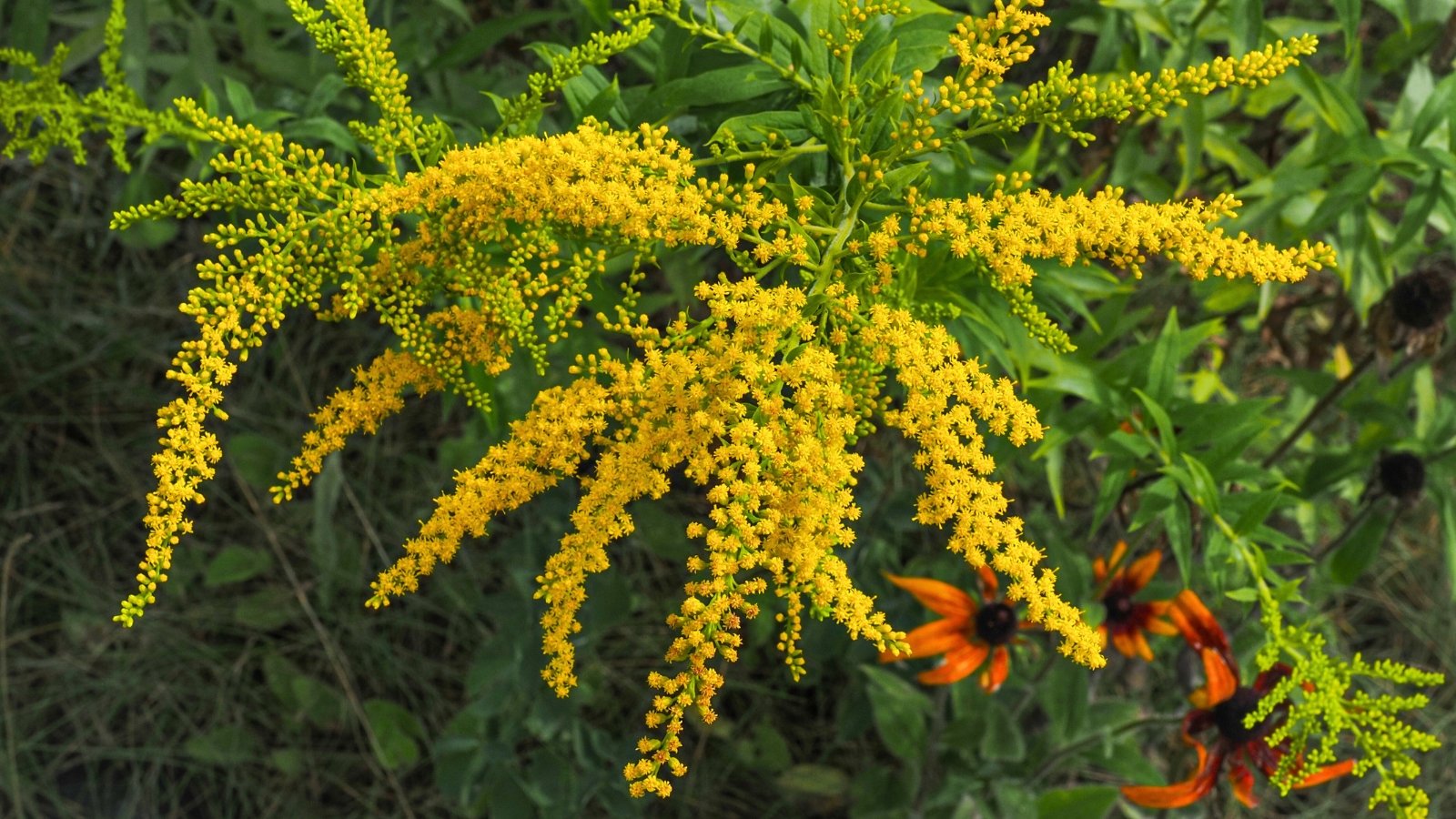 Starts blooming now and spreads easily if left alone.
Starts blooming now and spreads easily if left alone.For goldenrod, August typically marks the onset of their blooming period. These late summer to early fall bloomers are big and bold, and add tons of gold to the landscape. Plant a native species if you want plants that are exceptionally low-maintenance. Though, they can be vigorous in home landscapes.
It’s easy to get native goldenrod to spread and naturalize. Leave the flowers intact, and they will form fuzzy, floating seeds. Then just give the stem a shake, and they will pop up all over the place. Goldenrod is an important food source for pollinators as they prepare for their winter hibernation or migration.
Panicle Hydrangea
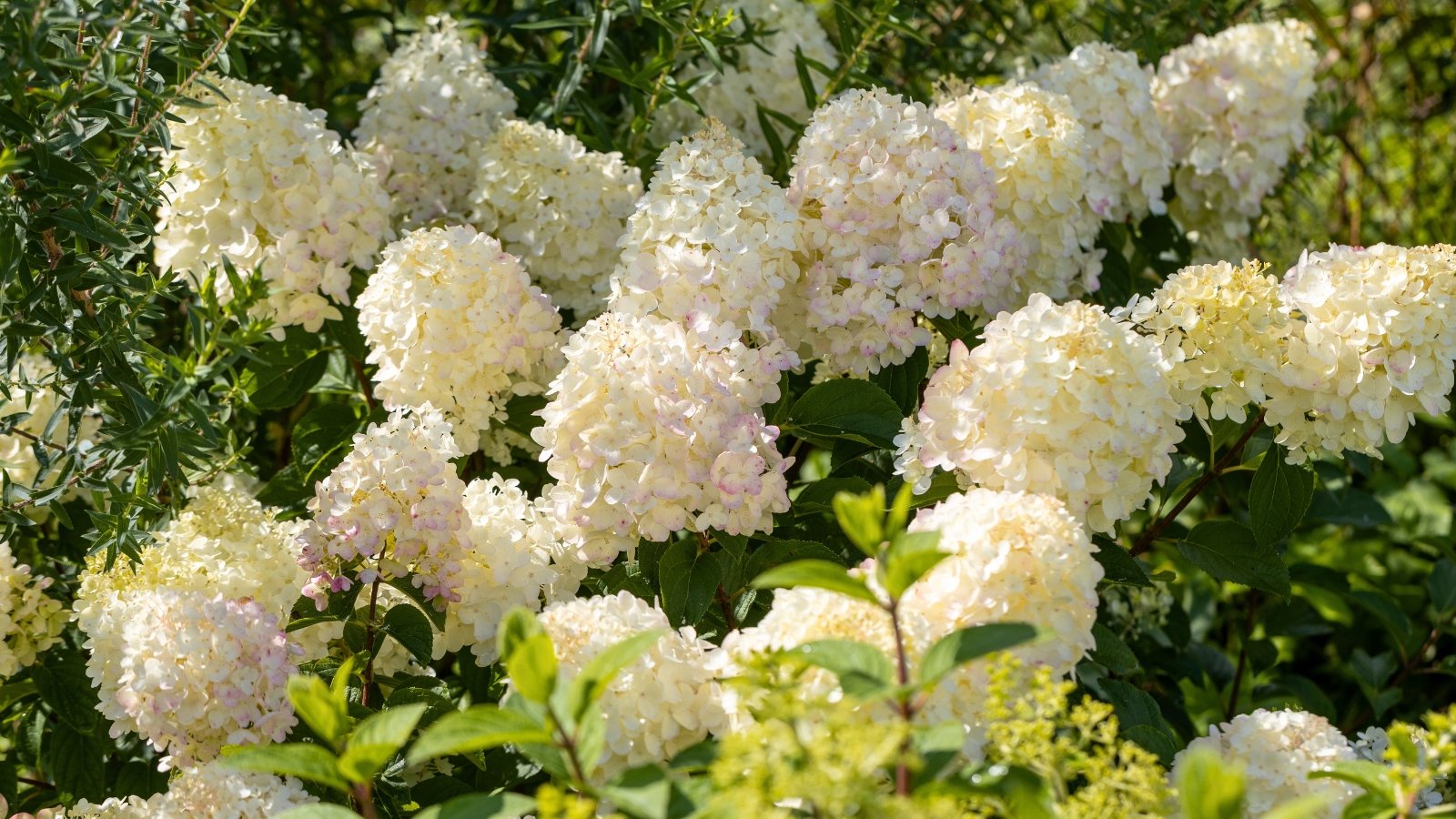 Peaks in August and handles more sun than others.
Peaks in August and handles more sun than others.Some hydrangeas bloom earlier in the year, and they’re spent by late summer. This is not the case with wonderful panicle hydrangeas. These flowers bloom in August and into fall. With large clusters of lacy flowers, these really add a ton of color and stunning blooms to the August garden.
Most panicle hydrangeas thrive only as far south as zone 8, but a few cultivars, including ‘Limelight’, are happy in zone 9. I have this one in my garden, and it is a fantastic August bloomer. They also tolerate the sun better than other species of hydrangea and are more drought-tolerant.


 18 hours ago
3
18 hours ago
3



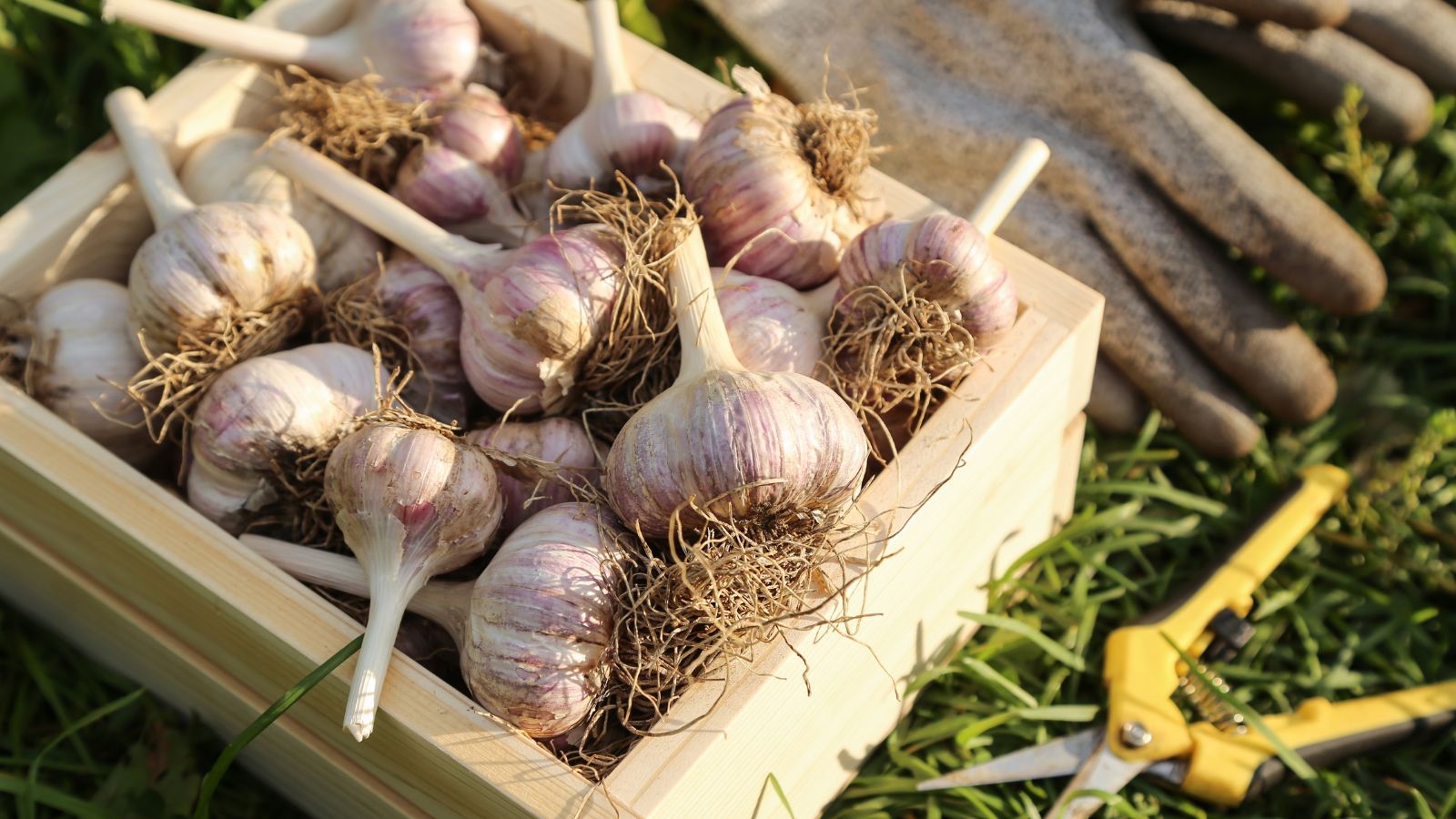
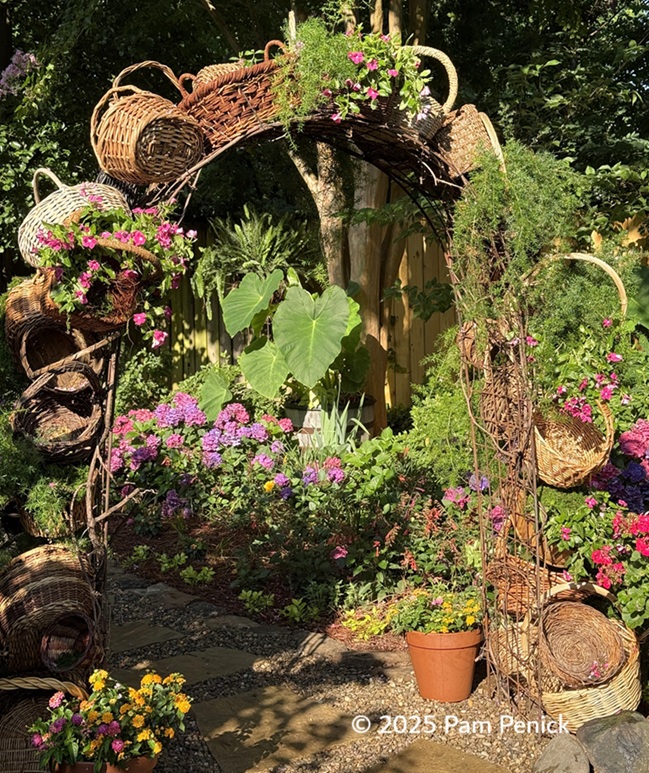
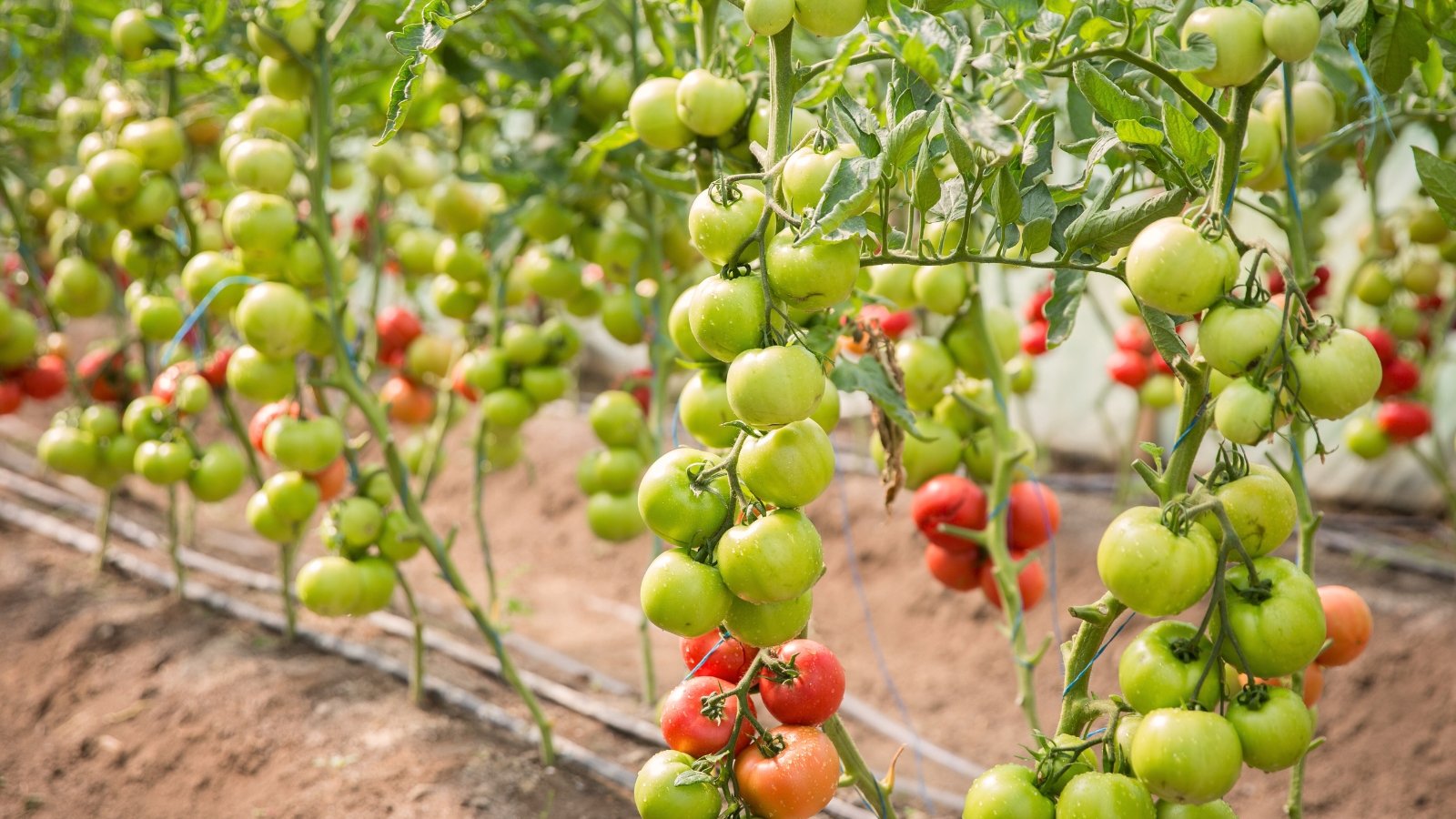















 English (US) ·
English (US) ·  French (CA) ·
French (CA) ·